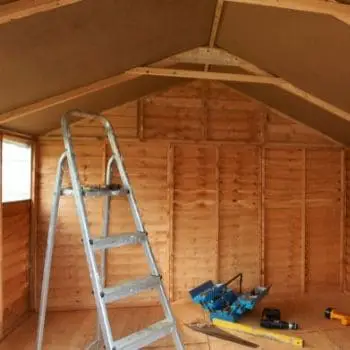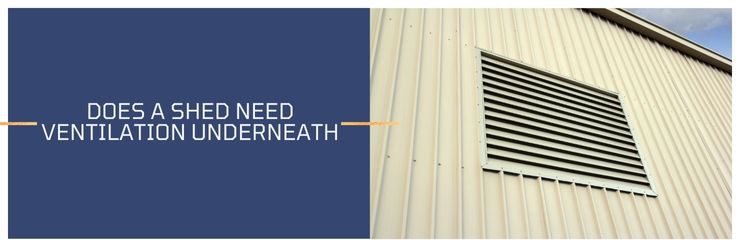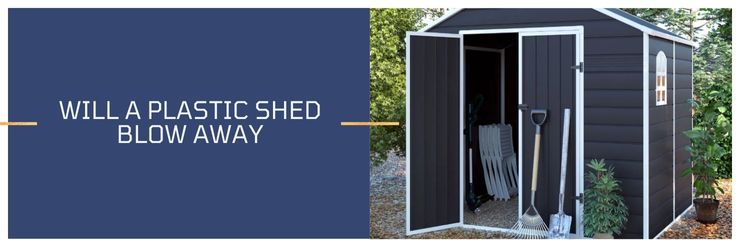If you’re like most shed owners, you probably don’t think too much about the floor. It’s just kind of there, holding up your stuff and keeping out the weather. But if you take a little time to insulate your shed floor, you’ll be amazed at how much difference it can make in terms of keeping your shed warm (or cool) and preventing moisture damage. So, how to insulate a shed floor?
Insulating a shed floor is best done before you build the shed, although can be done after. The easiest way is to know your R-value and place insulation between the shed floor joists.
So read on for tips on how to insulate a shed floor the easy way!
How To Insulate A Shed Floor
One of the best ways to insulate your shed is to invest in some quality insulation for the floor. This will help to keep the cold air out and the heat in, which can make a big difference in how comfortable you are when working in your shed during the winter months.
There are a few different types of insulation that you can choose from, so be sure to do some research before making your final decision.

Installing insulation in your shed is a great way to keep the space more comfortable during the colder months.
If you are planning on spending any significant amount of time working in your shed, this is definitely a project that you should consider undertaking.
By taking the time to insulate the floor of your shed, you can make a big difference in how comfortable you are while working in the space.
Types of shed floor insulation
When it comes to insulating your shed, there are a few different options that you have to choose from. Some popular methods are using fiberglass, spray foam, and foam insulation board.
Fiberglass insulation (Amazon link), as it is relatively inexpensive and easy to install.
Another option that you have is spray foam insulation (Amazon link). This type of insulation is more expensive than fiberglass.
I prefer using foam insulation board (Amazon link). It’s easy to install and provides good insulation. You can also find it in different thicknesses to better suit your needs.
What does R-Value mean for a shed
The R-Value of a shed measures the thermal resistance of the shed material, which indicates how well the shed will resist heat transfer. The higher the R-Value, the better the shed will insulate against heat transfer.
Heat transfer can cause a shed to become too hot or too cold, so it is important to choose shed insulation with a high R-Value to ensure that it will be comfortable in all seasons.
There are many factors that contribute to a shed’s R-Value, including the type of material used, the thickness of the walls and floor, and the insulation installed. To get the most accurate measure of a shed’s R-Value, it is best to consult with an expert who can take all of these factors into account.
What R-value for insulating a shed floor
There is no definitive answer to this question since it depends on numerous factors, such as the climate you live in, the type of shed floor you have, and your personal preference. However, a good rule of thumb is to choose an R-value that is appropriate for the climate you live in. For example, if you live in a region with cold winters, you’ll want to choose an R-value that is higher than if you lived in a region with milder winters.
The best way to find out what R-Value you need for your shed floor is to know which climate zone you live in.
In the US, The way regional climate zones for R-value works is; zone 1 and 2 is generally the hottest climate zone – The most southern point of the US
Zone 3-4 are in the middle of the US
The coldest points are zone 6 and 7, located in the northern part of the US.
| Zone | R-Value |
| 7 | R25-30 |
| 6 | R25-30 |
| 5 | R25-30 |
| 4 | R25-30 |
| 3 | R25 |
| 2 | R13 |
| 1 | R13 |
How To Insulate a shed floor using foam insulation board.
The best approach to insulate a shed floor is during the construction process. I prefer foam boards because they can easily be cut to shape and made to fit between the floor joists without too much effort.
If you have decided to insulate your shed after its construction is already complete, then you may need to raise the shed to access the underneath of the flooring and joists.
Foam insulation boards will not only insulate your shed but also add a moisture protection layer.
What you will need:
 |
Check the dimensions between your shed joists and what R-value you need to work out how many foam boards you will need to order.
Make a ledge for the insulation board to sit on:
First, I would recommend making a ledge for the insulation board to sit. on. How deep the ledge will be will depend on how thick your insulation board is and how many boards you want to stack on it.
For example, if each insulation board is 1 inch thick, with an R-value of 5. If you are aiming for an R-value of 20, then you will need 4 pieces of insulation board, stacked on top of each other. which will give you a depth of 4 inches.
You will then need to nail in a small ledge every 3/4 feet along each side of the floor joist.
Make sure you have accurately measured the distance from the top of the floor joist (where the shed will sit) to where the insulation board ledge slits will be – in our example, we calculated 4 inches.
Instaling the foam insulation board:
Measure the width and length needed to fit between the joists of the shed and cut the foam insulation boards to size so they fit snugly between the floor joists
If you are using foam boards make sure you cut enough of the boards. Because you will need to stack upon one another to get to the correct R-value needed.
fill the spaces between each of the floor joists with foam insulation board to ensure you are fully insulation.
Job complete!
Conclusion
Shed insulation is an important factor to consider when trying to keep your shed warm in the winter. There are many different types of insulation available, each with its own set of benefits and drawbacks.
Shed floor insulation is easily done using foam insulation boards and knowing the R-value for your area.
It is best to consult with an expert to find out which type of insulation is best for your specific shed.







